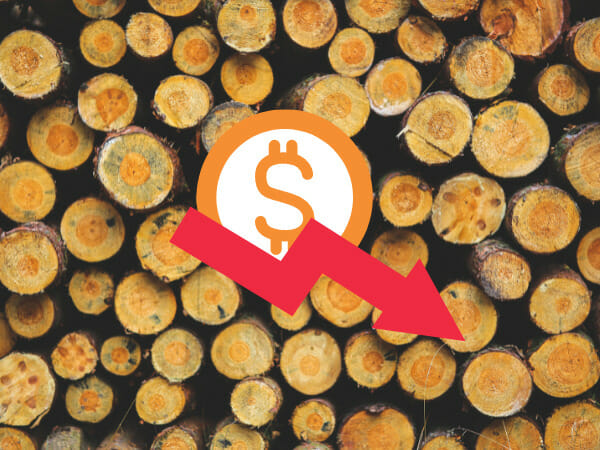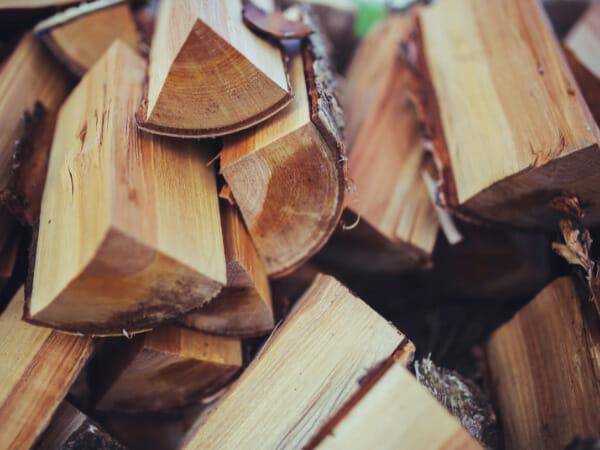The fluctuation of lumber prices – will it keep going down?
If you’ve been renovating your home or building a new one, you’ve seen lumber prices go through the roof. Yet, if you look at the price of lumber as a commodity, you’ll see that it’s been crashing down significantly! Why doesn’t this price drop reflect in the consumer market, and what does this mean for folks like you who need this material?
These are even more important questions if you want to invest in lumber. Believe it or not, it could be an important component of your portfolio. If lumber prices continue to go down, this might be a good time to buy lumber stocks or futures. Fortunately, this article can show you how to respond to lumber’s price volatility!
First, let’s talk about why the price of this building material has been swinging to and fro recently. I will go through the many factors that impact lumber prices, and then we will discuss how you can invest in it. Later, you’ll have an idea of whether or not you should add lumber to your list of investments.
Why are lumber prices falling right now?
When the price of anything goes down, most people point to major events as the cause. For example, blaming the COVID pandemic is easy to blame for everything bad right now.
You may even think that a culprit is a natural event. In December 2021, a massive flood in British Columbia disrupted transportation, causing the cost of lumber to increase.
People noticed its effects on specific kinds of lumber. For example, the market price of framing lumber skyrocketed to $129 in a week, which is a 50% price hike for December 2021.
Believe it or not, the biggest reason for the higher lumber prices is simply because its producers can jack up the price! To understand their actions, let’s look back to the housing market of 2020.
Many people lost their jobs and businesses, so it’s easy to assume they won’t spend much on home-building. That’s why the lumber industry scaled back its production.
With low demand, the price of lumber shouldn’t go up, right? Unfortunately, more people started building and renovating homes during the COVID-19 pandemic.
People needed something to do while staying indoors, so they decided to spruce up their places. This sparked a home-building season despite the pandemic.
On the other hand, others saw an opportunity to invest in homes. They thought there was a higher demand for them because a house lets people avoid the coronavirus.
The Federal Reserve pulled down interest rates which translated into lower mortgage rates. As a result, the United States housing market went on a buying frenzy!
However, that hype is starting to cool down as Fed chief Jerome Powell hinted that interest rates might rise again in March. This would make homes more expensive so that fewer people would invest.
This is a major factor in the falling price of lumber as a commodity. Unfortunately, home builders and regular shoppers won’t see those show up at their local Home Depot or similar stores.
Read More: The Popular Investment Trends Right Now
What affects the price of lumber?
Why would wood providers retain the price increase? While most people will point to greed, the real reason is that consumers need consistent prices.
Let’s say you have a housing project. The first thing you would need to do is check the materials you will need and then estimate how it would all cost.
You probably won’t buy all the materials in one go. You would need a space large enough, and you’ll need to spend a lot on them. Instead, you’ll get the amount you’ll need for each month.
Imagine if the price of lumber kept going up and down each time you went to your local home improvement store. Budgeting for it would be frustrating!
That’s why lumber producers would likely keep the prices at their current level. This might be bad news for home builders but welcome for investors.
How to invest in lumber and other commodities
When you invest in commodities like wood, you don’t look at the price tags at your local store. Instead, you check its price as a traded commodity.
The simplest way you could invest is by purchasing lumber stocks or ETFs. If you think lumber prices will rise soon, you could buy shares from companies linked to this material.
What’s more, you could buy a futures contract. This involves agreeing with another investor based on a commodity’s price in the long run.
For example, you could buy a lumber futures contract at $100 in 30 days. You thought the price would go higher by then, so you get another contract that will sell at the current market price.
If the spot price rises higher than your contact’s price of $100, then you earn a profit. Otherwise, you lose money. There are many options for lumber futures right now.
For example, the Schwab Random Length Lumber futures contracts trade in random lengths 2 x 4s eight to 20 feet long. Meanwhile, Chicago lumber futures trade per thousand board feet.
You will have to create a specialized brokerage account for this, though. Learn all you can think about futures before you start adding some to your portfolio.
Do the low lumber prices mean I should Invest?
If you’re planning to invest, you have to know what affects the cost of lumber. While it may not change much for consumers, it does move for investors. Read more about these factors below:
- Competition – Stocks and futures track the same commodity but from different sources. For a simple explanation, let’s say you invested in a US lumber company. If Asian lumber somehow becomes cheaper, more people might prefer that instead. As a result, its stocks may gain value while yours plummet.
- Politics – Some countries may enter trade disputes that have a huge impact on commodity prices. For example, the US-China Trade War placed a 25% tariff on US logs in 2020, which means higher prices for US lumber. This could dampen demand, causing a drop in its price as a commodity.
- Macroeconomics – Large economic factors could harm activities related to building and transport. As you may expect, the COVID-19 pandemic is another reason for the lumber price volatility. This is because it’s harming the global supply chain even now.
- Seasonality – Have you ever noticed the high price of fruit during some months? They grow on trees and other plants that only produce them at certain times of the year. The price of lumber works similarly.
- Weather – If a storm or wildfire ruins the forest where companies lumber, that reduces supply. That means they will have to offer it in the market at a much higher price.
Lumber prices are going down, so should you invest now? That will depend on your investment goals, so make sure you’re sure about yours beforehand.
After reading this article, look up more resources about investing. This only covered the basics, but you’ll need more than that to invest properly.
Related Articles
Final thoughts
Investors shouldn’t just focus on this, though. The price of lumber is moving wildly right now. It was going down at the time of writing, but there’s no telling how long that will go on.
This article is not meant to provide investment advice. Instead, you should look for other promising assets. It’s best to ask for help from a financial advisor.
Still, articles from Inquirer USA can provide more details about other assets. Even better, they can get you up-to-date with the latest happenings around the world!





